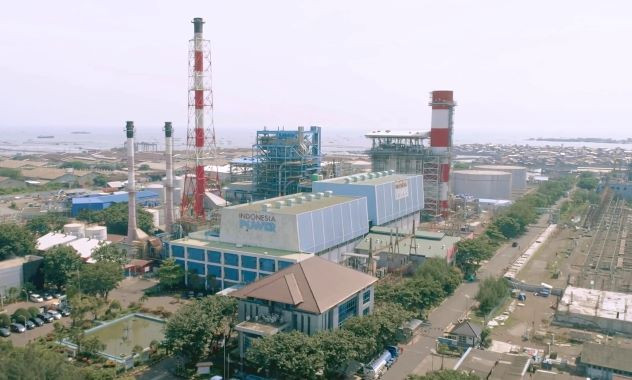t COP28, the world confirmed the goal of limiting global temperature rises to no more than 1.5 degrees. Doing so will require acting on a wide range of fronts, including carbon capture, use, and storage (CCUS).
Under the International Energy Agency’s most recent scenario, CCUS would need to abate 1 billion tons of CO2e by 2030, and half of 2050 fossil fuel use. Progress is far short of what is needed, roughly 45 million tons a year in 2022.
In Indonesia, whose own goal is to reach net zero by 2060, CCUS also offers great, but so far unrealized decarbonization potential. The power and industrial sectors, which are otherwise difficult to abate, accounted for about 25 percent of Indonesia’s emissions, and the country is on course to account for 80 percent of investment in CCUS in Southeast Asia through 2030.
In addition, Indonesia has significant low-cost storage potential. And in March, the Indonesian government clarified the legal and regulatory framework for CCUS in the oil and gas sector.
But all this may be akin to being the fastest turtle in a sprint: the pace is still far from fast. There is momentum, with projects announced in recent years by ExxonMobil, Pertamina, and BP’s Tangguh Enhanced Gas Recovery. However, realization is still years away. Earlier this year, the Global CCS Institute estimated that Indonesia’s CCUS readiness score is 30 (out of 100).
One reason for the slow pace is cost. Emissions from concentrated sources that could adopt CCUS, such as power plants, are considered low purity. These cost four times more than high-purity sources, such as fertilizers.
Also, there is a mismatch between where emissions are generated— mostly in Java—and where they can be sequestered, mostly basins in Sumatra or Kalimantan, resulting in high transport costs. Finally, existing economic incentives are limited; the planned carbon tax is less than US$3 per ton of carbon dioxide equivalent (MtCO2e), far less than the cost of deploying CCUS.
If Indonesia is to meet its net zero goal, it needs CCUS. Here are three actions that could help.
First, optimize costs. We estimate that CCUS could abate 375 to 480 MtCO2e a year from Indonesian industrial facilities. Nearly half of this could be captured by 10 “clusters”—six in Java, three in Sumatra, and one in Kalimantan. In such clusters, emitters who will adopt carbon capture technology are situated together, making it more cost efficient to build the required infrastructure. Baturaja, Bontang, and Palembang could be prioritized because of their access to high purity sources of emissions and nearby geological storage.
Both public and private sectors would need to work together to make this work. Bringing in partners could help defray costs and smooth out logistics. In Bontang, for example, partners could include power, gas, and fertilizer players; in Palembang, steel, fertilizer, and oil companies. Collaboration of sovereign wealth funds and global public-private entities could accelerate CCS hub investment at a country level.
Second, generate revenue. As the technology matures, monetizing CCUS as a business becomes another option. “Transition carbon credits”, similar to those announced by the Monetary Authority of Singapore during COP28 and endorsed by government and industry players, could be used to generate revenue from CCUS projects. Demand for these credits could come from corporate purchases for voluntary abatement targets and from government to drive domestic decarbonization.
There is significant potential waiting to be tapped, such as the global markets for steel and batteries. In August 2023, the European Union ratified a regulation that will require battery manufacturers to declare their carbon footprint; global demand for low–carbon steel is projected to grow tenfold by 2030. Deploying CCUS in these sectors could help to secure Indonesia’s right-to play in the global market.
Another revenue-generating option is to create value from by recycling captured CO2 in the production of green cement, synfuels, and other new materials.
One challenge is that there is not yet an accepted framework to quantify captured and stored emissions. Verra, the largest independent carbon credit standard agency, is developing one, and Indonesian government and industry leaders are also exploring the topic.
But when these will be completed and then implemented is unknown. Having clear standards is critical to the development of the carbon trade, including the possibility of entering the international market.
Third, create structural incentives. We estimate that up to 60 percent of emissions within the 10 demand clusters could be captured at an average carbon price of $50 to $80per MtCO2e. This is less than EU’s Carbon Border Adjustment Mechanism (CBAM) price of about $100 per MtCO2e. For export-oriented industries like fertilizer and steel, then CCUS could be an attractive solution.
Many countries, including Canada, Malaysia, the United Kingdom, and the United States, are experimenting with different approaches, such as tax credits, carbon pricing, direct funding, and subsidies. Indonesia can evaluate these efforts and adapt them to its own circumstances to help accelerate the commercialization of CCUS.
The theoretical case for CCUS is strong. It can be applied to power plants and hard-to-abate industrial sectors like cement and steel—and could be essential when electrification is not an option. Eventually, it could play an important role in the affordable production of clean, low emissions hydrogen. As the president of Indonesian Petroleum Association Yuzaini Bin Md Yusof noted in July, however, “There is still a lot of work to be done.”
That is exactly right. But we believe that Indonesia can make it work—in a way that will bring substantial long-term benefits.
***
Rajat Agarwal is a partner in McKinsey & Company’s Singapore office, where Vishal Agarwal is a senior partner. Khoon Tee Tan is a senior partner and leader of the Indonesia office. Yi Zhou is an associate partner in Singapore. The authors wish to thank Sonia Purba (Jakarta) and Ashwin Agarwal (Jakarta) for their contributions.


